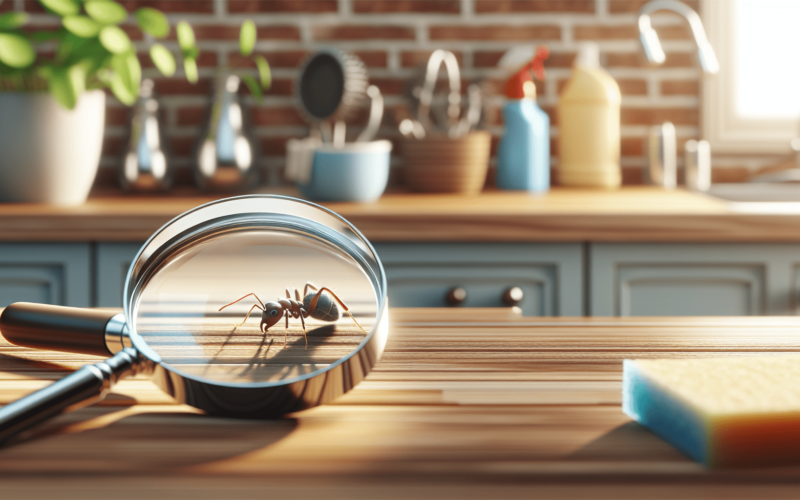Discover what classifies a bug in nature and technology. Explore the definitions, characteristics, and significance of bugs in our world.
Why Do I Suddenly Have Bugs In My House?

Have you noticed tiny creatures scuttling around your home, uninvited? You’re not alone in this experience, and it can be quite perplexing. Bugs can invade our living spaces seemingly out of nowhere, leaving us scratching our heads and wondering what could have caused this sudden appearance. Let’s dig into the reasons why bugs might have decided to crash at your place and what you can do about it.
Common Reasons for Bug Infestations
You might be surprised to learn that insects are often already present in your home, just lingering out of sight. It’s when the conditions become favorable that they start to emerge. Here are several common reasons that might explain this sudden influx of bugs.
1. Climate Changes
The weather plays a significant role in insect activity.
-
Temperature Fluctuations: As the temperature begins to drop, many bugs seek shelter in warmer environments, which often means heading indoors. On the flip side, a sudden heatwave can also drive bugs inside as they look for water and cooler surroundings.
-
Humidity Levels: Certain bugs thrive in high humidity. If you’ve noticed a spike in dampness around your home, it could be inviting pests that need moisture to survive, such as cockroaches or termites.
2. Seasonal Changes
As the seasons shift, so do the behaviors of various pests.
-
Spring and Summer: With warmer weather, many insects reproduce and seek food sources. You might notice an increase in ants and wasps during these seasons.
-
Fall and Winter: As it gets colder, pests like mice and spiders search for food and warmer climates indoors.
3. Accessibility
If your living space is accessible, you might find a range of bugs making themselves at home.
-
Cracks and Gaps: Small openings in windows, doors, and walls can serve as entry points for pests. Check your home’s exterior regularly for areas that need sealing.
-
Openings Around Pipes: Any space around plumbing can be a gateway for insects. Make sure to inspect these areas and close off any openings where bugs might sneak in.
4. Food Sources
Your home could be a buffet for various pests.
-
Unsealed Food Items: Leaving food out in the open, including pet food, can attract insects. Sugar and grains are particularly enticing for pests like ants and beetles.
-
Trash Management: If trash isn’t disposed of promptly or isn’t in tightly sealed containers, it can create an inviting scent for bugs searching for a meal.
5. Indoor Conditions
Sometimes, the living conditions in your home may invite bugs.
-
Overly Cluttered Spaces: Clutter can provide shelter for pests, making them feel safe and undisturbed. Boxes, stacks of magazines, and piles of clothes can become perfect hiding spots.
-
Moisture Accumulation: Areas like kitchens and bathrooms that maintain high moisture may attract insects. Fixing leaks and using a dehumidifier can help deter these pests.
Specific Bug Types: What They Indicate
Different insects in your home can indicate specific problems or conditions. Knowing what type of bugs you are dealing with can guide you on how to address the issue.
1. Ants
Ants are social insects that work together to establish colonies.
-
Why They Come: They’re often looking for food sources, particularly sugary substances. A single ant can lead others to a treasure trove of crumbs in your kitchen.
-
What to Do: Keep countertops clean, store food in airtight containers, and seal any entry points. If you’re facing a significant problem, you might want to consider professional pest control.
2. Cockroaches
These creatures are often associated with unsanitary conditions.
-
Why They Come: They thrive in warm, humid environments and are typically drawn in by food sources and shelter.
-
What to Do: Clean your home thoroughly and eliminate clutter. If you suspect an infestation, consider traps and baits, or call a pest control expert if it becomes overwhelming.
3. Fleas
Fleas may become a problem if you have pets.
-
Why They Come: Fleas hitch rides on pets, and once inside, they can quickly multiply.
-
What to Do: Regularly treat your pets for fleas and keep your home tidy. Ensure you vacuum often and wash your pet’s bedding to eliminate flea eggs.
4. Termites
These wood-eating pests can cause significant damage.
-
Why They Come: They are attracted to moist wood, and can easily invade homes with untreated wooden structures.
-
What to Do: Ensure that wood isn’t in contact with the soil and that any leaks are repaired promptly. If you suspect termites, it’s essential to contact a pest control service as soon as possible.
5. Spiders
While most spiders are harmless, their sudden presence can be unsettling.
-
Why They Come: Spiders seek places to create webs and hunt for food, like insects.
-
What to Do: Regularly clean corners and take preventative measures, such as sealing cracks and keeping outdoor lights off at night to avoid attracting insects.

Prevention Tips: Keeping Bugs Out
You don’t have to accept bugs as part of your home environment. There are several strategies you can employ to keep these pests at bay.
1. Regular Cleaning
Consistent cleaning can drastically reduce the likelihood of bugs invading your space.
-
Kitchen Care: Wipe down surfaces, wash dishes promptly, and sweep floors regularly to eliminate food particles that attract pests.
-
Bathroom Maintenance: Keep bathrooms dry and clean to discourage moisture-loving insects.
2. Seal Entry Points
Prevent insects from entering your home by sealing off potential entryways.
-
Windows and Doors: Ensure screens are intact and seal openings around windows and doors.
-
Foundation Checks: Inspect your home’s foundation and fill in any cracks or gaps that insects could use to get inside.
3. Diligent Outdoor Maintenance
Your outdoor space can influence what bugs come inside.
-
Yard Care: Trim bushes and trees that are close to your house, as they can act as bridges for pests.
-
Moisture Control: Ensure that gutters and downspouts direct water away from your home’s foundation to minimize damp conditions that attract pests.
4. Storage Solutions
How you store items can play a crucial role in bug prevention.
-
Use Airtight Containers: Store food and other attractants in airtight containers to eliminate access for pests.
-
Declutter Regularly: Keep your home organized and free of excess clutter, making it challenging for pests to find hiding spots.
5. Professional Help
Sometimes, the best defense is to call in the experts.
-
Regular Inspections: Consider having your home inspected periodically by a pest control professional to catch any signs of an infestation early.
-
Treatment Options: If you encounter a severe pest problem, don’t hesitate to reach out for professional pest control services that can tailor a plan specific to your situation.
What to Do if You See Bugs
Seeing bugs in your home can be distressing. If you come across unwanted visitors, here are initial steps you can take:
1. Identify the Bug
Your response can vary based on the type of bug you encounter.
-
Basic Identification: Familiarizing yourself with common household pests can allow for a quicker and more effective response.
-
Research and Documentation: Take notes or photos when you spot them, which can help with identification when seeking professional assistance.
2. Tidy Up
Don’t delay about cleaning when you notice bugs.
-
Immediate Cleaning: Even if you don’t see any more bugs, clean the area thoroughly as a preventive measure.
-
Use Deterrents: After cleaning, consider using natural deterrents, such as vinegar or peppermint oil, which can repel some insects.
3. Monitor the Situation
Keep an eye on the issue to determine whether it’s a one-off sighting or a developing problem.
- Daily Checks: Performing daily checks in high-traffic areas can help you identify patterns or additional pests before they become a larger infestation.
4. Implement Preventive Measures
Taking proactive steps can minimize future invasions.
-
Adjusting Habits: Mindfully managing how food is stored and waste is disposed of can significantly reduce the attractiveness of your home to pests.
-
Ongoing Maintenance: Incorporating consistent cleaning and inspections into your routine can help catch potential pest problems before they worsen.
Conclusion: Taking Charge of Your Home
Figuring out why you suddenly have bugs in your house can feel overwhelming. Bugs often enter homes based on various factors related to environmental changes, food access, and shelter availability. But don’t fret!
By implementing preventive measures, maintaining cleanliness, and being proactive about addressing issues when they arise, you can take charge of your living space. You’ll not only create a more bug-resistant home but also enjoy a cleaner and more comfortable living environment. Your home should be your sanctuary, not an invitation to pests.



